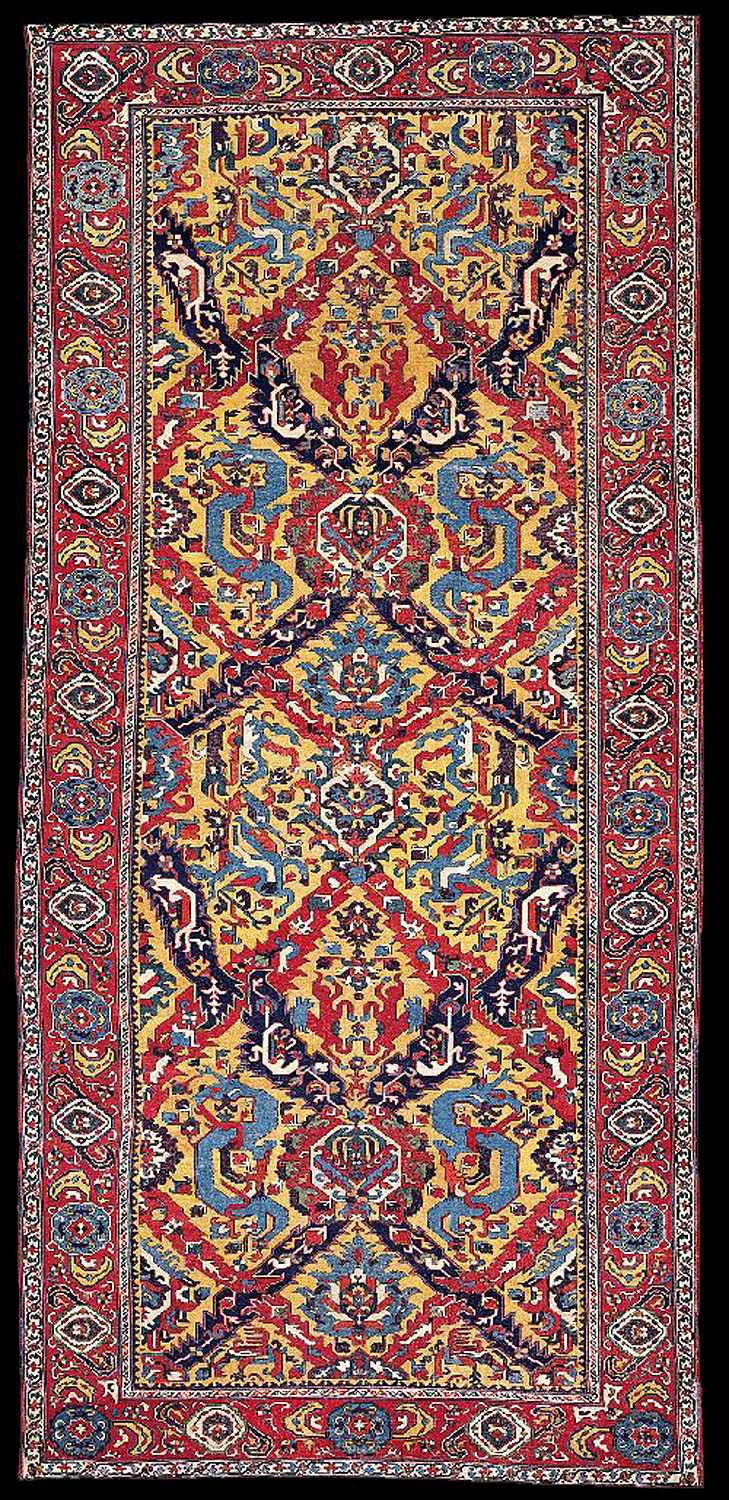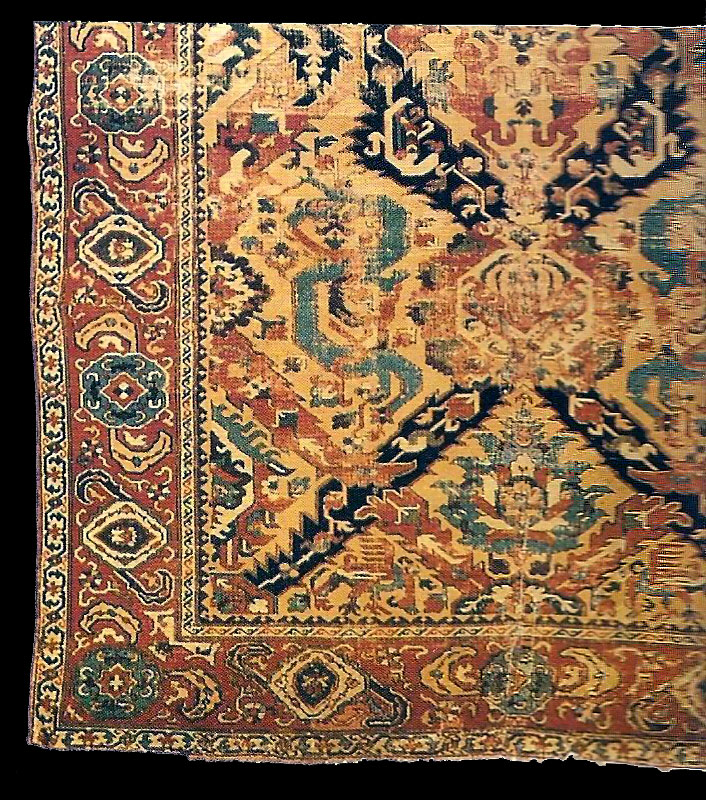|


|
The Toms Dragon Carpet
Shirvan region, Caucasus, late 17th or early 18th century
186 x 405 cm (6ft 1in x 13ft 4in), wool pile on a cotton foundation
Over the past thirty years The Textile Gallery has handled several of the
earliest and most beautiful Caucasian 'dragon' design carpets known. One of
the most appealing is the Toms dragon carpet, remarkable for its fine weave,
brilliant colours and golden yellow background. The field pattern is
traditional, but the border drawing is unique. Dragon carpets were made in a
number of different centres in the Caucasus. The most famous examples are
those generally attributed to the Karabagh region, in the southwest, which
are knotted on a woollen foundation, often with extra cabling in the weft.
The majority of these - most of which are on a red ground, some on brown and
a few on blue - form a very distinct group both stylistically and
technically, suggesting a single centre of origin.
There are also Caucasian dragon carpets with other weaves, different ranges
of colour and different wool, suggesting that they come from alternative
centres. Possibly the most important of these is the Toms carpet, which was
made in the Shirvan region, in the east Caucasus. One related example is the
famous white ground dragon carpet in the Wher Collection (Hali, vol. II, no.
1, pp. 16-18), with wool warps and cotton wefts; another, which has the same
inner minor guard border as the Toms carpet, was once in the Bernheimer
Collection (Bernheimer, 1959, pl. 135). Dragon carpets with beautiful yellow
backgrounds are exceedingly rare, and the only published example is in
Colonial Williamsburg (Yetkin, 1978, vol. 2, p. 33, fig. 152; Colonial
Williamsburg, 1975, pl. 48).
The Toms carpet is attributed to the beginning of the second phase of dragon
carpets, dating from the second half of the seventeenth century onwards.
While it carries all the design elements featured in first phase examples
from Karabagh, dating from the mid-seventeenth century or earlier, it is
unlikely to be contemporaneous because these elements are not quite so
precisely defined. The stylisation of the design is more akin to the Jacoby
and Hamburg fragments (Yetkin, 1978, vol. 2, figs 128-9), which are also
attributed to the second phase.
This important carpet was acquired in 1995 at auction, from the famous
collection of Mr and Mrs Reginald Toms in Switzerland. The carpet was in
remarkable condition with much of its original pile intact, but there were a
number of small holes and a few small areas of wear. Finding the right
restorers to work on such a tightly woven and very finely knotted carpet was
not simple. A number of restorers tried test areas, but none could quite
match the weave and colours. In 1999, we showed the carpet to our good
friend Armand Deroyan, who told us that, given time, Woven Legends could
restore the carpet perfectly, and he most generously offered to supervise
the work. With patience, good friends and superb craftsmen it was thus
possible to return this carpet to its full splendour.
Provenance: Toms Collection, Switzerland.
Published: Hali, 80, 1995, p. 21; Sotheby's, London, The Toms Collection, 7
June 1995, lot 68; Day, 1996, 349, pl. 352 (detail in colour).
Works cited: Bernheimer, Otto, Alte Teppiche des 16. bis 18. Jahrhunderts
der Firma L. Bernheimer, Bernheimer, Munich, 1959; Day, Susan (ed.), Great
Carpets of the World, Vendome Press, New York, 1996; Colonial Williamsburg
Foundation, English and Oriental Carpets at Williamsburg, text by Mildred B.
Lanier, Williamsburg, Virginia, 1975; Yetkin, Serare, Early Caucasian
Carpets in Turkey, 2 vols, Oguz Press, London, 1978.
|


